

Chase County
Kansas
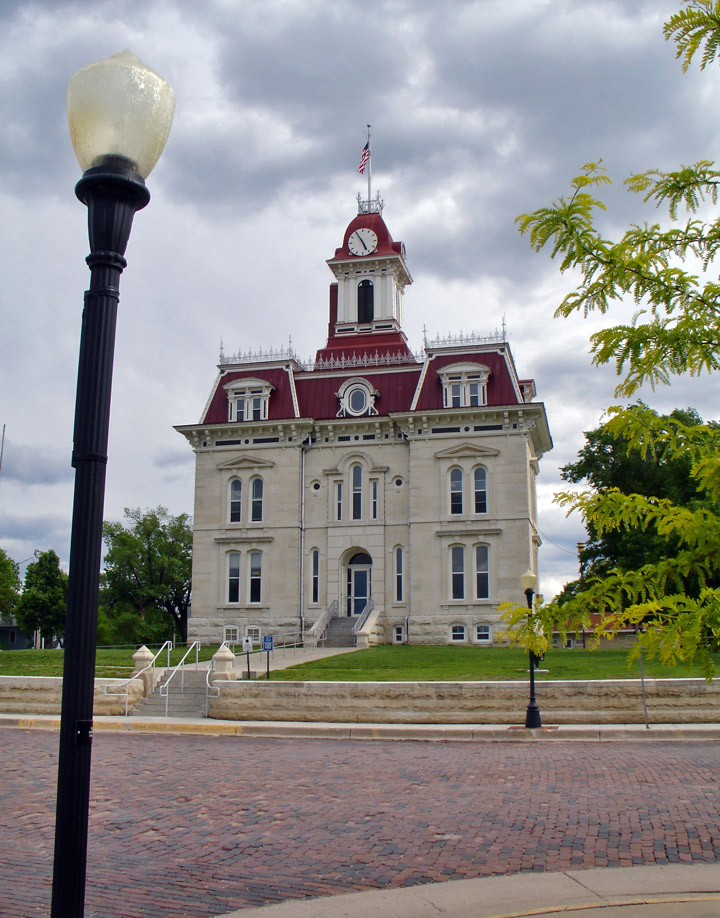
Chase County Courthouse
1873 - A Historic Landmark
Cottonwood Falls, Kansas
• Building completed October 8, 1873.
• Built of native Chase County limestone and walnut.
• Buildings’ total cost was $42,599.
• Mansard tile roof and three-story, walnut spiral staircase.
• Renaissance style architecture of Louis XIII period.
• Stands 113 feet from ground to flagpole.
• John Bannon, Leavenworth, general contractor.
• John 0. Haskeil, Lawrence, architect.
• Oldest courthouse still in use In Kansas and Midwestern states.
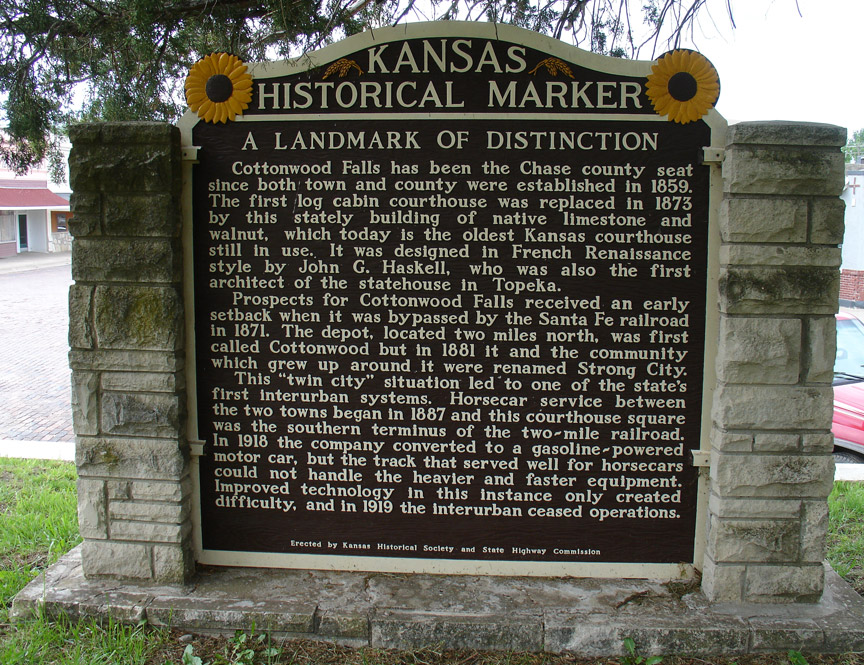
During the decade following the Civil War, Chase County residents knew their county had outgrown its log cabin courthouse and makeshift jail. It must have better quarters for a growing population.
Therefore, at a special election in August of 1871, thirteen years after the county’s formation and with a population of about 600, voters approved a $40,000 bond levy for a new courthouse and jail. The bond issue passed by 64 votes.
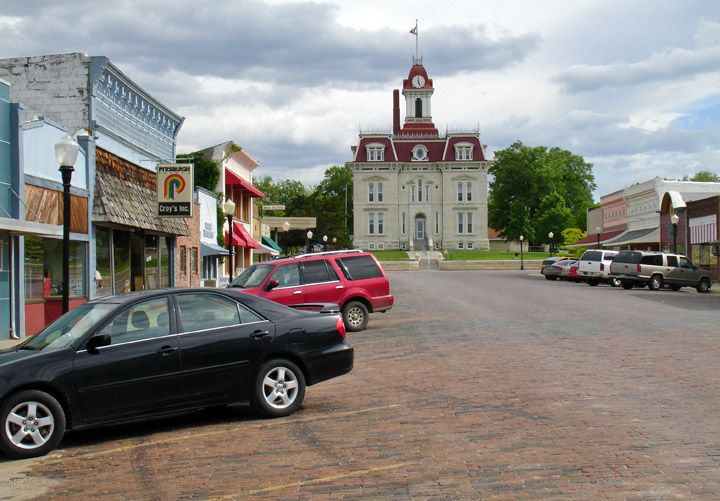
at the end of the main street
From the beginning, the Chase County Courthouse had a remarkable past. A handful of pioneers - a bare majority of voters - dared to dream of a public building which would last a century.
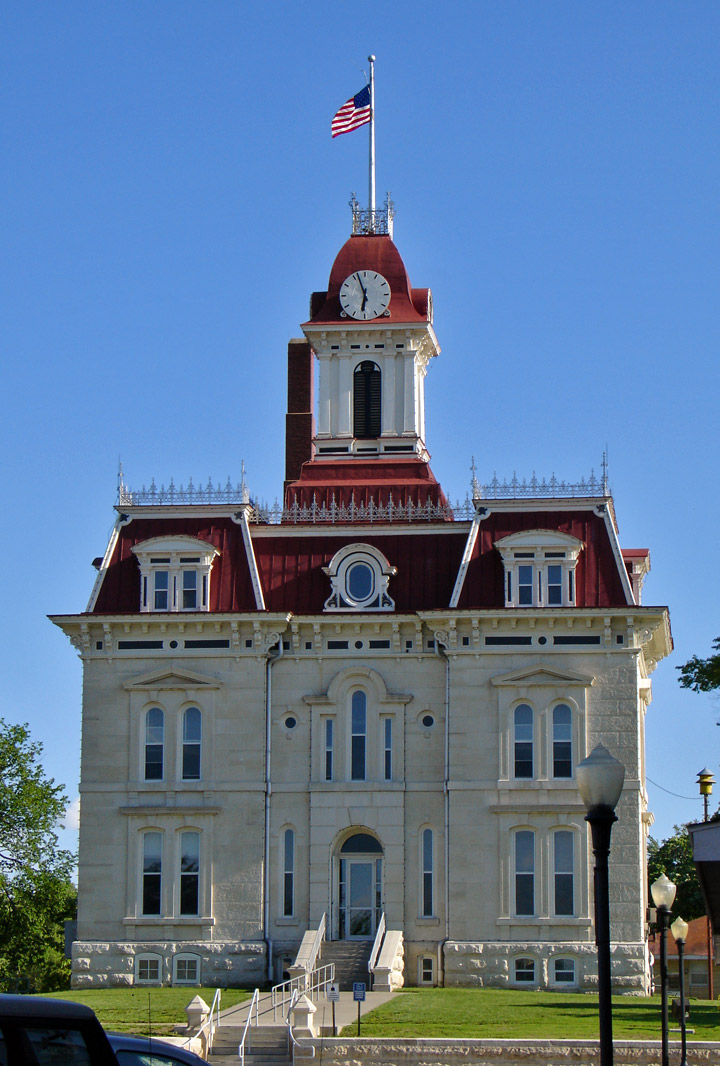
"A people without history is like wind on the buffalo grass." -
Sioux Proverb
After the bond issue passed, Isaac Alexander, one of the county’s more
flamboyant settlers, donated two and a half acres of land in Cottonwood Falls
(the county seat) to the county with the condition that a combination courthouse
and jail be built on his land at the head of Broadway, the hamlet’s main street.
Also, he stipulated that the county maintain this ‘Courthouse Square’ for a
public park.
Chase County officials were quick to accept his offer.
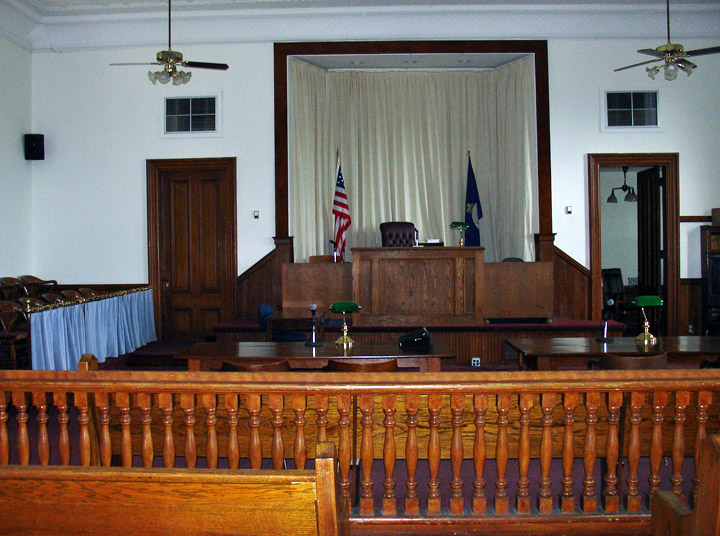
second floor courtroom
John Bannon of Leavenworth, Kansas,
was low bidder for the structure. He, in turn, with the commissioners’ consent
chose John 0. Haskell of Lawrence as architect. Mr. Bannon and Mr. Haskell, who
was also one of the nation’s foremost architects, envisioned a bold concept in
design — a French Renaissance Chateau of the Louis XIII period. Indeed, a daring
project in the 1870’s.
These men and their skilled workers toiled two years to build a courthouse which
would be unmatched. They spared no expense to erect a building which would serve
Chase County for a century or more, a monument to these proud Flint Hills
pioneers.
The Chase County Courthouse is the oldest courthouse in Kansas and the Midwest,
still in daily use.
‘We shape our buildings; thereafter, they shape us." -
Winston Churchill
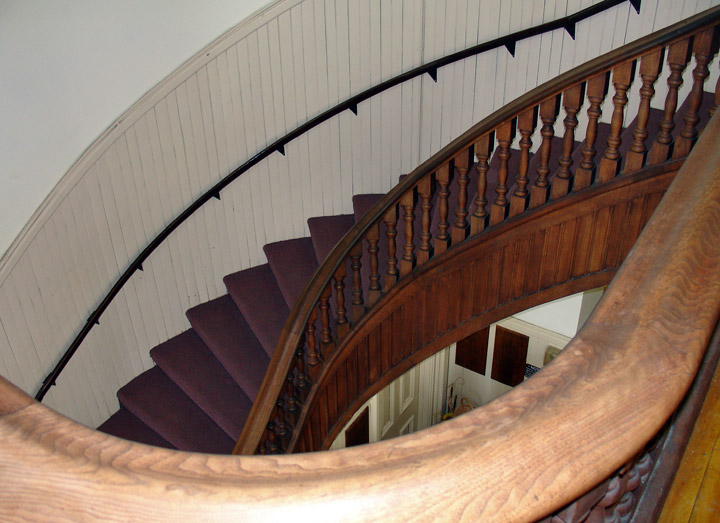
Walnut spiral staircase
A small colony of sixty workmen came with Mr. Bannon from Leavenworth to build
the Courthouse. The contractor knew about the fine magnesium limestone abundant
in Chase County. Consequently, he decided the entire three-story structure would
be built of this native stone. His masons opened a quarry on Mr. Alexander’s
land on Spring Creek, a half-mile west of the site. Bannon and Haskell
personally supervised the construction.
All of the limestone was quarried, hand-cut, and fired, then brought to the
Courthouse square by horse-drawn wagons. A few of the more massive stones, some
weighing from five to seven tons, were quarried two miles west of Cottonwood
Station (now Strong City).

Mr. Bannon’s notes show that these stone masons and carpenters, who worked six
days a week for two years, were well-paid for their efforts. They earned $3.50 a
day; other laborers received from $1.75 to $2.25 a day.
Chase Countians watched in awe as the three-story structure took shape, a
fairy-book French Renaissance castle. The building was like nothing they had
ever seen, with its ornate cornices and moldings and the Mansard roof topped
with a towering cupola. It was grand!
Finally, on October 8, 1873, the Courthouse was completed.
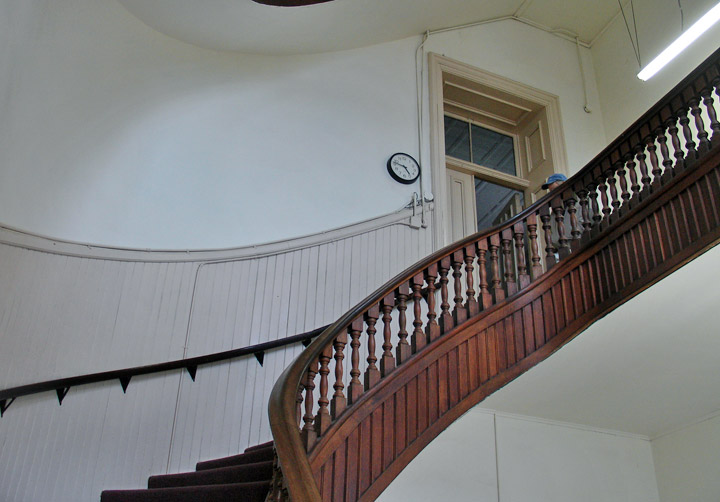
Take a step back in time and stroll through the foyers with the pioneers at the
gala ‘open house!’
To celebrate its completion, Chase Countians gave themselves a grand ball in the
second floor courtroom on Friday, October 17, 1873. Supper tables groaning with
food, were spread in the jail. Families in buggies, men on horseback, traveled
from all the nearby villages for the house-warming.
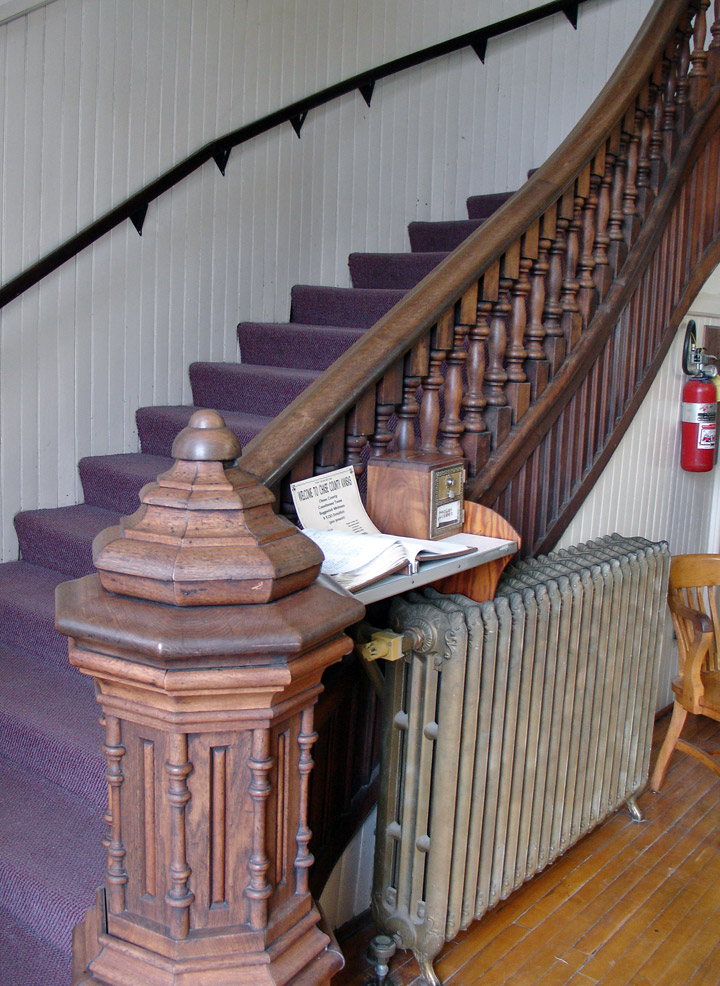
pillar anchoring the stairway
When they entered the tall double doors opening to the main foyer, they gazed at
one of the architectural wonders of Kansas or of any state — a spiral staircase
which extended from the first to the third floor.
The wide stairway of 53 steps made a full circle for each of the three halls,
one directly above the other.
A massive black walnut balustrade, the celebrants observed, was hand-cut from
walnut trees growing beside the Cottonwood River. “Incredible,” they whispered.
The winding staircase had no center support.
Quarter-sawn oak boards run the length of the first floor foyer. From the main
hallway, eight-foot high doors, with embossed brass hardware, opened to six
county offices.
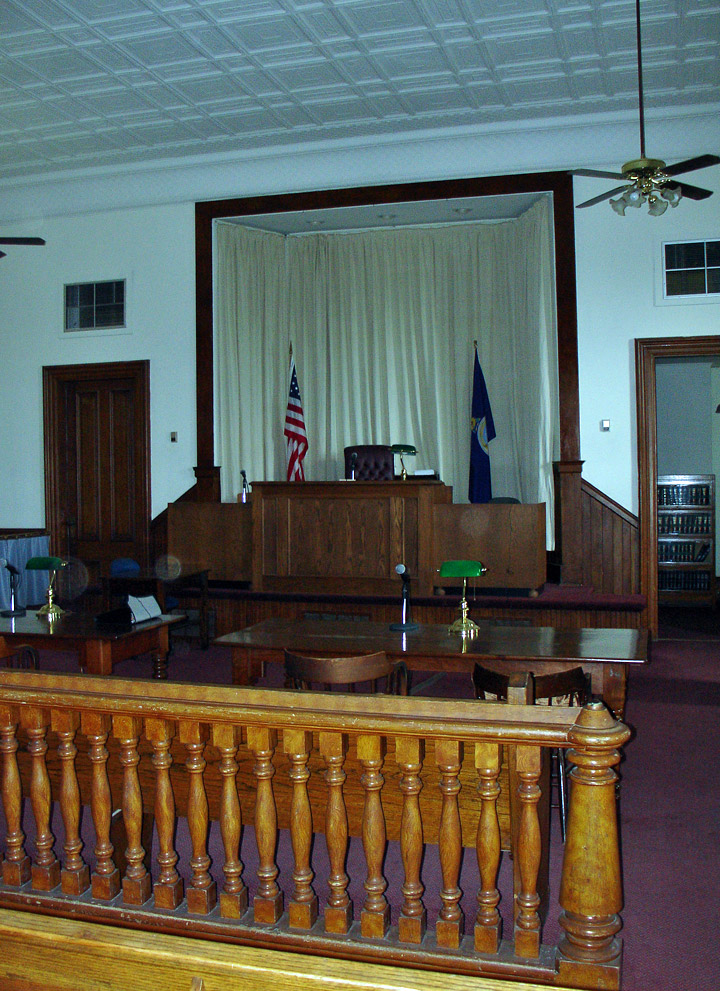
the courtroom
On the second floor, the townsfolk walked through another double doorway into
the high-ceilinged courtroom, its ceiling made of embossed tin. Toward the rear,
on either side of the judge’s bench, they inspected the jury room and judge’s
chamber.
Climbing the staircase to the third floor, they discovered two additional rooms.
Some of the braver party-goers scaled the ladder to the bell tower which
enclosed a 500 pound bronze bell. The bell served a genuine purpose. Its peal
alerted the townspeople of fires and tornadoes and it reminded them when court
was in session.
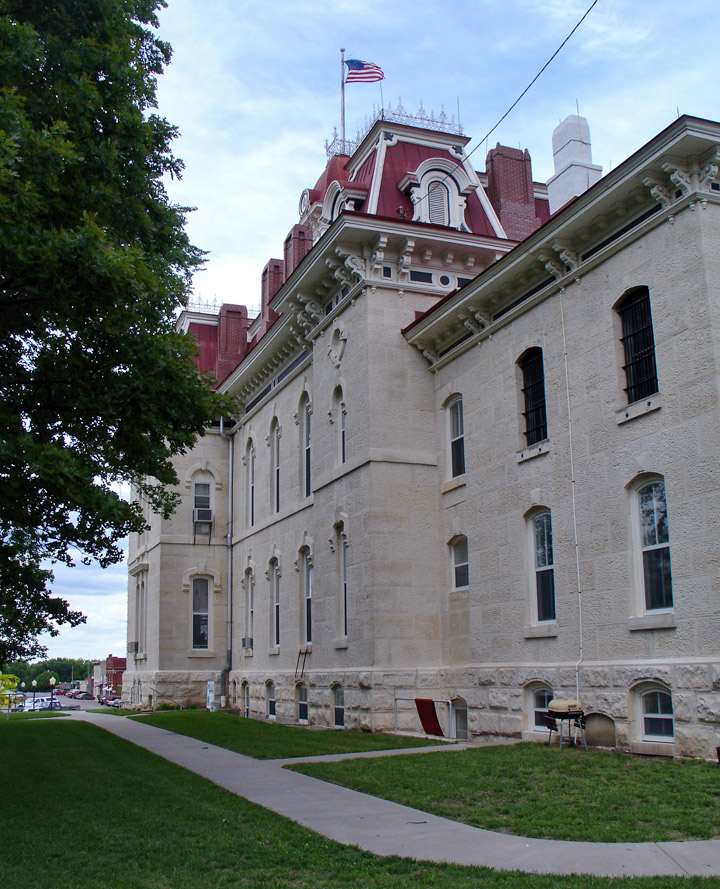
side view of the courthouse
A long rope attached to the bell hung
to the first floor foyer.
(After a cupola fire in 1966, the bell tower’s renovations dimmed the bell’s
tone; however, sometimes it is rung.)
At the cupola’s north side, a six-foot high clock faces the town’s main street.
Each band weighs some 120 pounds and measures three-and-a-half-feet. (Today,
time frequently stands still in Chase County. The clock tower, looming 113 feet
from the ground, is often a target for a lightening bolt.)
On the third floor, a high, recessed oval window facing Broadway intrigues
children who love to crawl into the window nook. With its lofty view, they can
watch the happenings on main street or they might gaze at the rolling prairies
speckled with wild flowers.

the jail
As the people explored the south wing of their wondrous Courthouse, they
approved the three-room living quarters for the sheriff and his family. They
were proud of the stoutly built jail on the second floor - an improvement from
their log cabin jail. The jail’s ceiling and floor were constructed of two by
eight inch oak planks laid on edge, then spiked side by side. The floors were
then covered by sheet metal. A solid steel door opening on the hallway made the
most ‘hardened outlaw’ forget his notions of a jailbreak.
The jail would serve the county’s
malefactors for a century until the mid 1970’s when new state statutes closed
the jail forever.
On the south, another walnut staircase, a smaller version of the north
staircase, provided access from the basement to the second floor. People
discovered a walk-In attic above the jail. This attic contained a large wooden
plank cistern used to collect rain water from the tile roof.

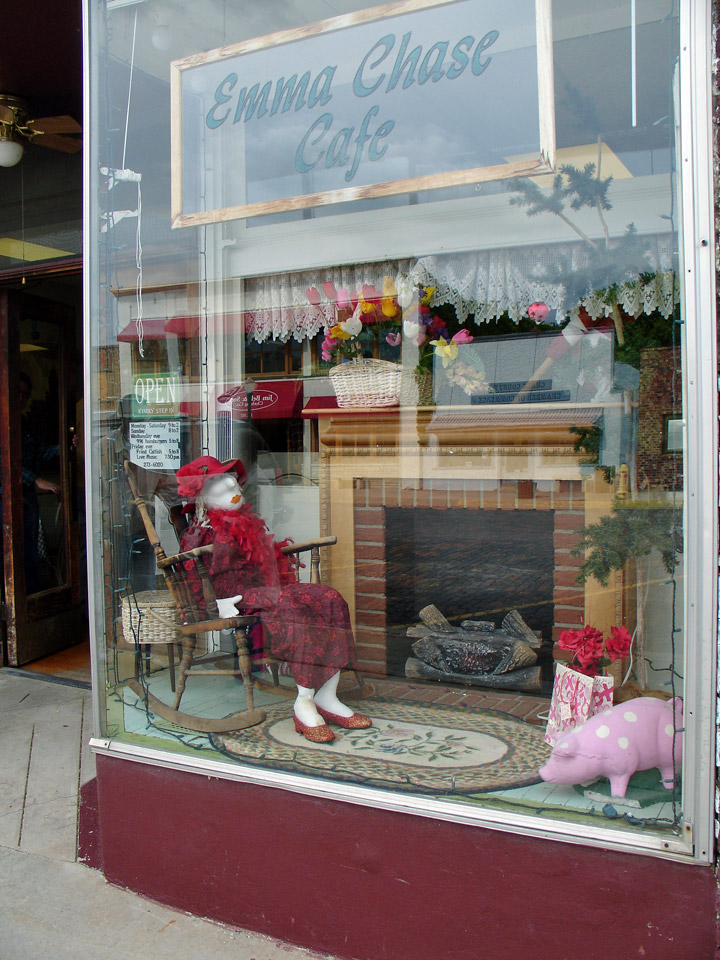
Emma Chase Cafe
The party-goers found the basement stairway leading from the main foyer. The
basement with dirt floors held the coal bins and vaults for county records, and
according to many -rats!
(An old vault still remains in the basement corner guarding county records.
Another unusual vault in the Register of Deed’s office, circa 1910, Is two
stories high with a glass brick ceiling!)
As Chase Countians toured their new, majestic Courthouse from the basement to
its towering cupola, some dare-devil boys, the story goes, raced each other
around the wide ledge on the roof or took turns sliding down the walnut
banister. Young and old alike were convinced that the building, which they bad
sacrificed to build, was unparalleled. Today, over a century after the builders
and masons and carpenters finished their work, the Chase County Courthouse
continues to ‘serve the people well.’
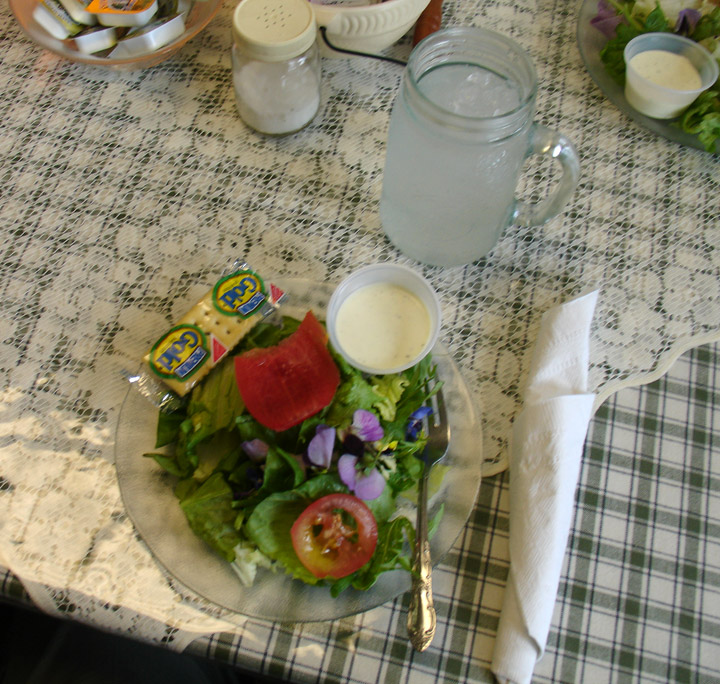
colorful salad at the cafe
Native limestone, used In the building, has been shipped to every state In the
country where It may be found in scores of famous public structures, Including
the Capitol Building In Washington D.C. and the Topeka State House.
Each year over 6,000 visitors from every state and from many countries visit the
Courthouse, marveling at its architectural design, the stonework and the spiral
staircase in the same way as did the pioneers In 1873.
In 1971 the Courthouse was entered in the National Registry of Historic Places
and the Kansas Historical Site register.
Unmatched In durability and design, the Courthouse remains a living tribute to
its builders and the Flint Hills pioneers who dreamed of a Courthouse which
would stand a century.
Their legacy belongs to everyone.
(From Chase County Historical Sketches, Vol. 1)
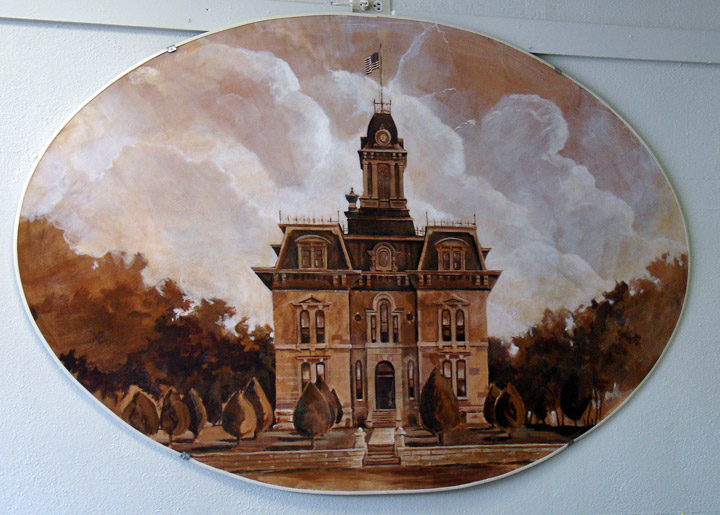
painting of the Chase County courthouse
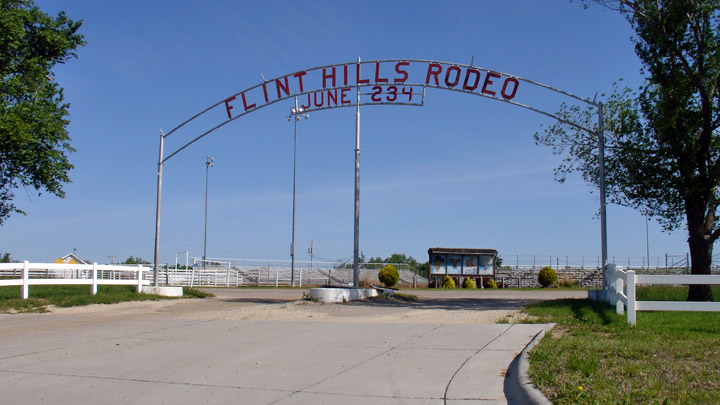

Flint Hills Rodeo in Strong City, Kansas
Camp Wood

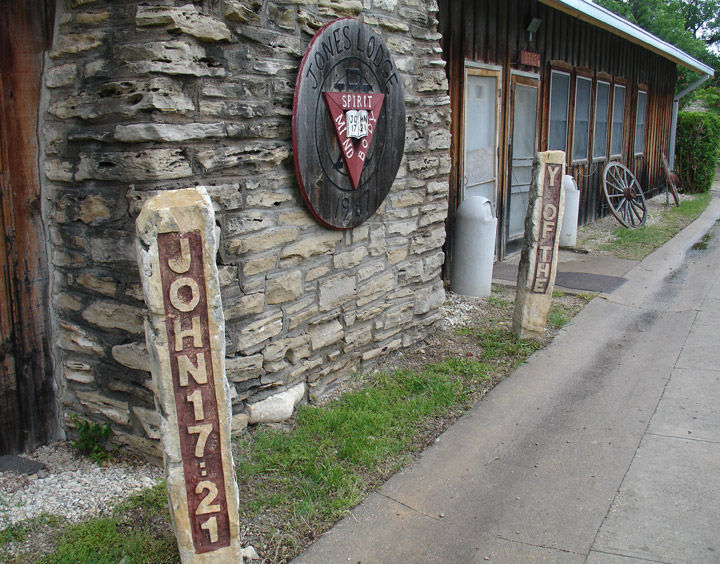
a YMCA camp in Chase County
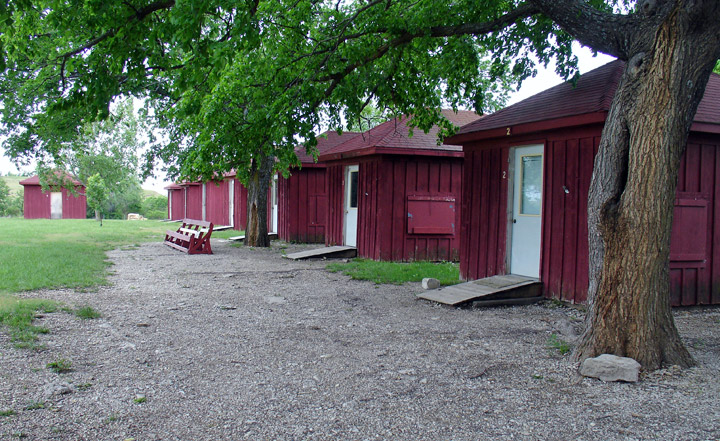
cabins for the youth during the summer season